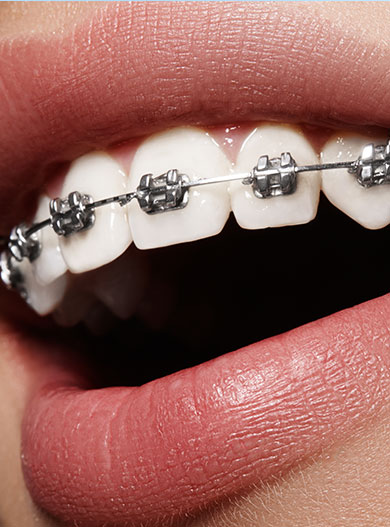Metal Braces
The classic tried and tested approach to orthodontic treatment. As the industry introduces new technology and modes of optimizing treatment, the timeless method never runs out of style.
Metal braces, sometimes referred to as “traditional braces” use a metal bracket and wire system to straighten teeth, close gaps, correct over- or under-bites, and achieve a healthy and aligned beautiful smile.
Braces are built from high-quality stainless steel or titanium. It is comprised of a few components: brackets, wires, and elastics. Brackets are metal fixtures that are affixed to the front of each tooth using a special dental adhesive. The brackets serve as the base foundation against which the wire is placed. The wire, or archwire, is a thin metal wire that connects each bracket and puts pressure on the teeth to guide them and aid in repositioning the teeth. Elastics, ligatures, or donuts as we like to call them, are coloured ties that hold the archwire in place against the brackets. These ligatures will be changed at every appointment, and you can even customize your braces with a variety of different colours to choose from!
Metal braces do not require manufacturing, such as Invisalign or LightForce, because it is not customized for your specific tooth or structure. You can get started with your treatment right away if you choose metal braces as your choice of treatment. At your bonding appointment, our hygienist will bond your appliance, go through an oral hygiene routine with you, educate you on maintenance and management of your braces, and teach you how to use DentalMonitoring.
Even though metal braces are the classic option, our office has enhanced the traditional experience using advanced remote monitoring technology. Like Invisalign and LightForce, our patients with metal braces are not excluded from the exclusive patient care. With DentalMonitoring our patients with metal braces will be able to send us weekly images of their teeth so that we can remain updated on their treatment progression and compliance. For more information, please see our section on DentalMonitoring.


